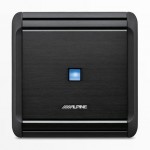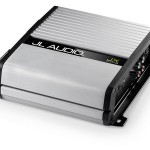Whether you’re looking for sound quality, high output or budget friendly choices, I will break down the options and show you the best car amplifier for your needs.
Estimated read time: 4 minutes 30 seconds. Want to read later?Car amplifiers can generally be broken down into 3 categories:
- Mono or single channel amplifiers – used for subwoofers
- 4 channel amplifiers – used for interior speakers
- 5 channel amplifiers – used for a combination of interior speakers and subwoofers
When shopping for the best car amplifier, it is important to pay attention to the following specifications:
- RMS power ratings
- Total Harmonic Distortion level or THD
All the amplifiers I recommend here are excellent quality. You will see they have relatively low total harmonic distortion level, typically less than or equal to 1%. They’re also rather efficient and come in a compact size. I’ve also listed physical dimensions for your reference as well.
Check your specs
Note, all of the amplifiers I recommend follow CEA-2006 Compliance regarding RMS rating guidelines:
- Number of Watts X Number Channels RMS @ Number of ohms at 14.4 volts
Make it a point to look at an amplifier’s RMS power rating and see at what impedance or ohms it is rated at. Some less than stellar car amplifier companies out there will advertise an unrealistic power handling rating just to grab your attention. Oftentimes it’s only when you look at the owner’s manual do you find these ratings are listed at an unrealistic impedance such as .5 or 1 ohms.
For interior speaker amplifiers, generally speaking, you’re always going to be running the amp at 4 ohms. For subwoofers, you want your final impedance to stay in the range of 2 to 4 ohms. Anything less than 2 ohms is typically too little resistance for an amplifier to handle effectively. When you run a car amplifier below the specified impedance capability, you risk both sound quality and damage to your amp.
So pay close attention to those RMS ratings when shopping for an amplifier. For reference, RMS stands for Root Mean Square. Simply put, it is an approximation of continuous average power.
Power vs Size vs Sound Quality vs Budget
For this post, I’ve included a basic $ rating system in the amplifier comparison charts to give you an idea of cost against power, overall size and sound quality. Here is the key for that simple rating system:
- $ = $75 – $150
- $$ = $150 – $250
- $$$ = $250 – $400
- $$$$ = $400 & up
Best Mono Car Amplifiers
In the mono amp category, the more popular amps are in the 500 watt power handling range. In our shop we sell both the JL Audio JX 500/1D and the Alpine MRV-M500. Either amp is a great choice when you need a 500 watt mono car amplifier. If you are also installing the optional bass knob, JL Audio’s RBC-1 is slightly easier and cleaner to install. It’s slightly smaller so it’s easier to dismantle and mount in a stealth manner than Alpine’s RUX-KNOB.
If you need something slightly more powerful, like in the 600 watt range, I recommend the JL Audio XD 600/1 v2. It’s a great compact little amplifier that is very efficient and reliable. For a 1000 watt RMS mono amplifier, consider the JL Audio JX 1000/1D. The JL Audio JX 1000/1D puts out 1000 watts RMS at 2 ohms, but only 500 watts RMS at 4 ohms. Alpine’s PDX-M12 on the other hand has a regulated power supply and will consistently put out 1200 watts RMS whether you have a 2 ohm, 3 ohm or 4 ohm load. If you need a high output mono amplifier with a small footprint, the Alpine PDX-M12 is the way to go.
Best Car Amplifier – Mono up to 500 watts RMS
 |  |
|
|---|---|---|
| RMS @ 2 ohms at 14.4 Volts | 500 watts | 500 watts |
| RMS @ 4 ohms at 14.4 Volts | 300 watts | 300 watts |
| Bass Knob Ready | Yes - RUX-KNOB | Yes - RBC-1 |
| THD | <1% | <1% |
| Physical Size L x W x H | 7-7/8'' x 7-7/8'' x 2-3/16'' | 7-11/16" x 7-13/16" x 2-1/8" |
| Gauge Power Wire Recommended | Minimum 8 Gauge | Minimum 8 Gauge |
| Price | $ | $$ |
Best Car Amplifier – Mono up to 1200 watts RMS
 |  |  |
|
|---|---|---|---|
| RMS @ 2 ohms at 14.4 Volts | 600 watts | 1000 watts | 1200 watts |
| RMS @ 4 ohms at 14.4 Volts | 400 watts | 500 watts | 1200 watts |
| Bass Knob Ready | Yes - HD-RLC | Yes - RBC-1 | Yes - RUX-KNOB |
| THD | <1% | <1% | <1% |
| Physical Size L x W x H | 8-1/2'' x 7-1/8'' x 2-1/16'' | 10-15/16" x 7-11/16" x 2-1/16" | 10-1/8'' x 7-9/16'' x 2'' |
| Gauge Power Wire Recommended | Minimum 4 Gauge | Minimum 4 Gauge | Minimum 4 Gauge |
| Price | $$$ | $$ | $$$$ |
4 Channel Amplifiers
When shopping for a 4 channel amp, keep in mind, there is actually a sound quality difference between amplifiers. Take these three amps for example:
- Alpine KTP-445U (45 watts x 4)
- JL Audio XD 400/4 v2 (75 watts x 4)
- Alpine PDX-F4 (100 watts x 4)
All of these amps are great options with various power handling ranges. They’re all compact and efficient. The KTP-445U is the most compact and efficient of all. Aside from power output and physical size, there is also an audible sound quality difference between all of these amps.
If you were to compare the KTP-445U to the built in amplifier of an Alpine head unit (about 18 watts x 4 RMS) you would notice a considerable difference in output, clarity and vibrancy. Yet, when compared to the JL XD 400/4 v2 amplifier, the Alpine KTP-445U sounds rather flat. If you had the opportunity to listen to these car amplifiers on a sound board (like I do) you would notice the XD 400/4 v2 sounds more lively and vibrant. If you then compared the JL XD 400/4 v2 amplifier to the Alpine PDX-F4 amplifier you would find the PDX-F4 is even more vibrant and has greater detail and subtle nuance.
Best Car Amplifier – 4 Channel
5 Channel Car Amplifiers
5 Channel car amplifiers are a convenient option for anyone looking for a space saving, total system amplifier. In my shop, we sell both Kenwood and Alpine 5 channel amplifiers. The major differences between these 5 channel car amplifiers is their power capabilities and overall size. They all have great sound quality and provide warm, rich and natural tonal qualities. The Kenwood has a very small footprint along with pretty impressive power output – note there is no optional plug in bass knob for the Kenwood. If you purchased this amplifier, you could always install a universal bass knob, like the PAC Audio LC1. That’s what we do in our shop when we sell and install this amplifier.
Best Car Amplifier – 5 Channel
 |  |  |
|
|---|---|---|---|
| RMS @ 2 ohms at 14.4 Volts | 90 watts x 4 + 350 watts x 1 into 2 Ohms | 75 watts x 4 + 600 watts x 1 | 100 watts X 4 plus 500 watts x 1 |
| RMS @ 4 ohms at 14.4 Volts | 60 watts x 4 + 250 watts x 1 into 4 Ohms | 60 watts x 4 + 400 watts x 1 | 100 Watts X 4 plus 500 watts x 1 |
| Bass Knob Ready | Yes - RUX-KNOB | No | Yes - RUX-KNOB |
| Sound Quality Rating | 7/10 | 8/10 | 9/10 |
| THD | <1% | <1% | <1% |
| Physical Size L x W x H | 10-5/8'' x 9'' x 2-1/4" | 10-1/4" x 6-5/8" x 2" | 10-1/8'' x 7-1/2'' x 2" |
| Gauge Power Wire Recommended | Minimum 8 Gauge | Minimum 4 Gauge | Minimum 4 Gauge |
| Price | $$$ | $$$ | $$$$ |
Conclusion
As you can see, there are a variety of choices and options out there when shopping for the best car amplifier. Space constraints, desired RMS power output, sound quality and budget can all factor into your decision making process when selecting the best car amplifier. I hope this post has made it a little easier to select the best car amplifier for your unique needs and vehicle application.
Still confused about the best car amplifier for your needs? Feel free to post a question in the comments and I’d be happy to clarify any details and answer any questions. Thanks for reading!






